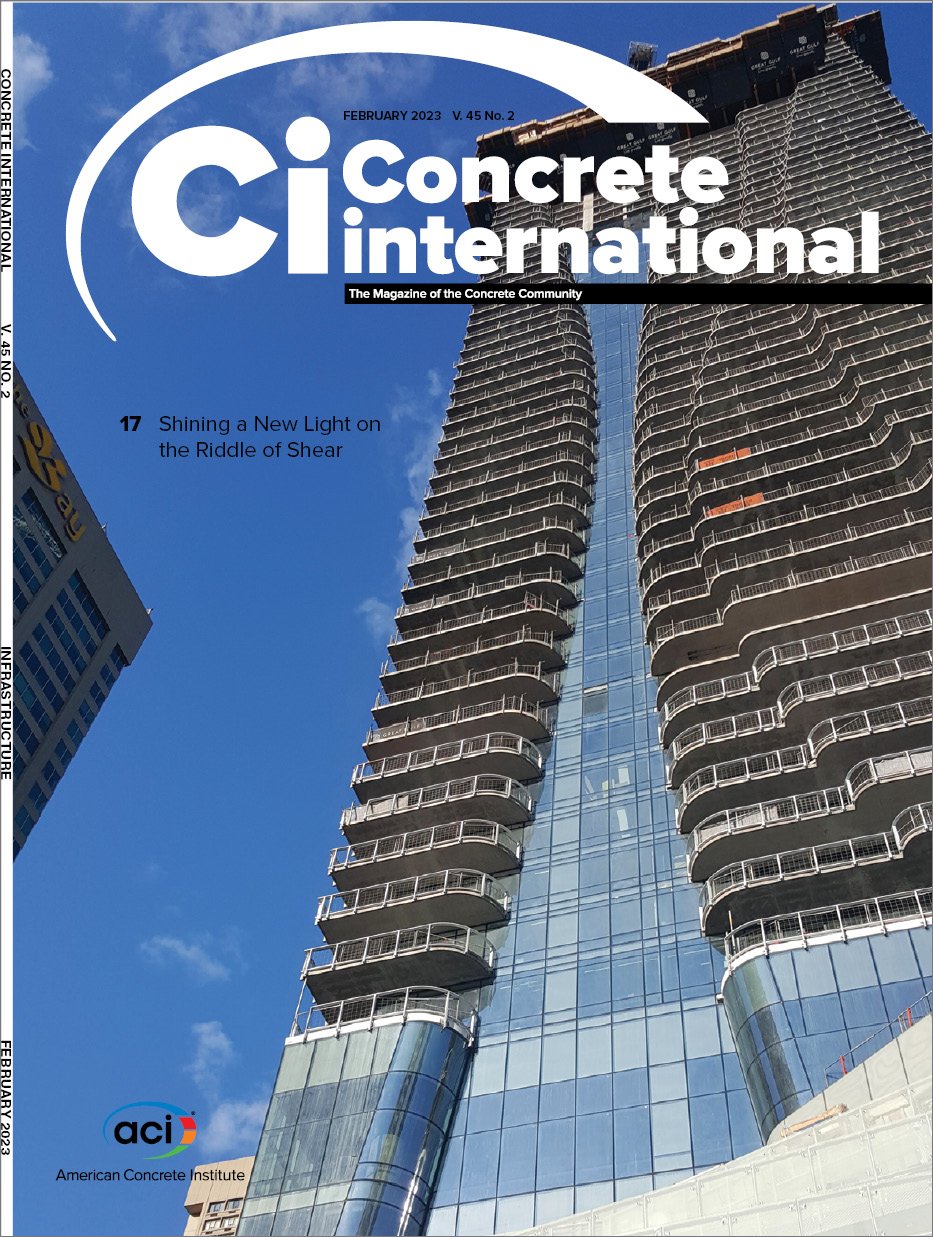Shining a New Light on the Riddle of Shear

Concrete International - The Magazine of the Concrete Community | February 2023
Jack Poldon | Engineering Intern
Despite over 100 years of reinforced concrete research, the precise load-carrying mechanism for shear is still up for debate.1 Past researchers have characterized shear failures through empirical relations based on limited measurement data leading to design codes around the world using different approaches to estimate shear strength.
But with the emergence of distributed sensors, namely distributed fiber optic sensors (DFOS) and digital image correlation (DIC), the potential now exists to characterize the behavior of reinforced concrete with a new level of accuracy, and to find an answer to the riddle of shear.2
While the ACI shear provisions for members with stirrups are well established, there are numerous cases where a more robust understanding is helpful, such as assessing the strength of existing structures designed by older codes or with poor details, and displacement-sensitive members subjected to high shear forces like transfer girders. The irregularly shaped and nonorthogonal transfer girders in Fig. 1, for example, require a robust understanding of shear to ensure proper performance at both serviceability and ultimate limit states (ULS). In cases where a transfer girder supports many stories of a building, the displacement of these highly loaded members can govern design. Also, as the industry moves toward reducing its carbon footprint, finding efficiencies in design will become increasingly important and this will only be successful if the limitations of the basic design models are understood.
This article examines the ACI 318 assumptions and design approaches for shear using the results from beam tests with varying shear reinforcement designs measured with emerging sensor technologies. After the research campaign is described, the distributed measurements are presented with discussion of the key insights. Finally, takeaway messages are presented for designers.
Experimental Campaign Specimen design
This study focused on three reinforced concrete beams named JP-1, JP-2, and JP-3 which were designed with varying shear reinforcement, as summarized in Fig. 2 and tested in three-point bending.